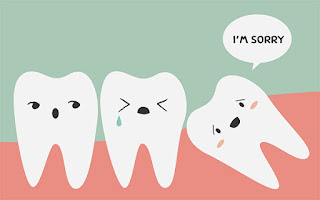 Periodontics is the diagnosis, prevention, and treatment of periodontal disease, which is the inflammation and infection of the gums, ligaments and bones which support the teeth. As a general dentist, we treat both gums and teeth in order to ensure that you have the highest chance of retaining all or the majority of your natural teeth as you age. We work on all of the structures that are behind the scenes, ensuring that your mouth is healthy, that your teeth are perfect, and you have a bright and radiant smile. Besides working with the roots, gums, bone, and ligaments, we also specialize in dental implants in the event that you do experience tooth loss. This is one of the most effective ways to replace teeth that have either fallen out or need to be replaced.
Periodontics is the diagnosis, prevention, and treatment of periodontal disease, which is the inflammation and infection of the gums, ligaments and bones which support the teeth. As a general dentist, we treat both gums and teeth in order to ensure that you have the highest chance of retaining all or the majority of your natural teeth as you age. We work on all of the structures that are behind the scenes, ensuring that your mouth is healthy, that your teeth are perfect, and you have a bright and radiant smile. Besides working with the roots, gums, bone, and ligaments, we also specialize in dental implants in the event that you do experience tooth loss. This is one of the most effective ways to replace teeth that have either fallen out or need to be replaced.We also work with many different ailments that affect the mouth. Periodontal diseases range from simple inflammation of the gums to serious infections that can severely damage the gums and even cause tooth loss. Typically, gum disease starts with relatively minor symptoms. The gums may be slightly sensitive, bleed while brushing, or appear to be red and inflamed. This stage is commonly referred to as gingivitis and is easily treated. By simply performing a deep cleaning and removing plaque and tartar from under the gum line, we can help the gums to heal. Typically, after this cleaning they will regain their natural appearance and won't cause further discomfort. In our dentist office, we prefer to treat the disease at this stage because it prevents our patients from feeling further discomfort.
During regular dental exams, we will let you know if you may have gum disease. If caught early enough, we will perform a deep cleaning, and that will be all that is needed. However, if the disease has advanced, the treatment options become more intense. With periodontics, gum disease can be treated when the gums have already started to recede. This is a common symptom of the disease and fairly easy to recognize. When you are brushing your teeth or smiling, pay attention to your gums and look to see if they appear to be shorter and your teeth appear to be longer. This is the most common and obvious sign of gum recession. As the gums continue to pull away from the tooth, pockets can be formed in the gum tissue. This is particularly dangerous because bacteria can gather there and form acid which attacks the exposed tooth structure and roots. When this form of gum disease is left untreated, it can lead to bone loss as the acid wears away the tooth structure. This is why people that suffer from gum disease often experience tooth loss as they age.
We can treat the condition using various periodontics procedures. In the case of receding gums, a gum graft may be necessary to seal up the pocket and secure the gums back around the tooth. This procedure will prevent the bone loss that could otherwise occur. Once done, patients typically report feeling far more comfortable while eating and drinking as well.
In periodontics, there are also procedures that are more cosmetic in nature. For example, a periodontist can reshape gums that are too large for the teeth. Our priority, however, is oral health and our gum treatments focus around health concerns. We understand that without healthy gums, your teeth cannot remain healthy and strong as you age. To that end, we recommend scheduling teeth cleanings for at least twice a year so that we can remove bacteria and plaque from your teeth and gums. If we notice any signs of gum disease, we will recommend treating it right away before you experience any further discomfort or irritation.
 Many patients are unsure if they need to see a
Many patients are unsure if they need to see a